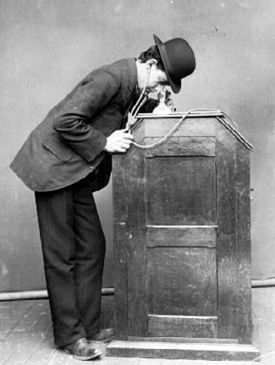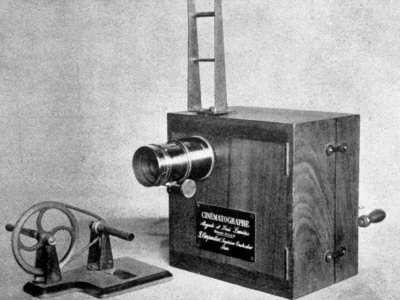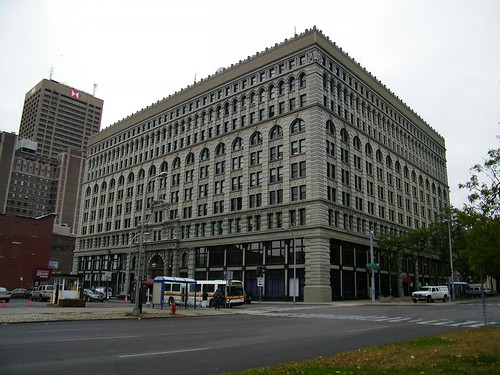Stop motion was really the start of film and although there were many people who experimented with making stop motions in the 17th century, it really all started out with Leland Stanford, a wealthy businessman and politician who one day wondered while riding his horse if all four of his horse's feet left the ground simultaneously. He was so curious that in 1879 he hired Eadweard Muybridge, a English photographer, to take a series of photos of his horse running. Eadweard then put all the photos together creating a very successful first stop motion of real photos. This was the beginning of a huge step towards the birth of silent films.
Muybridge later invited what is to be known as the very first movie projector, the Zoopraxiscope (a mouth full right?) The Zoopraxiscope was simply a machine where you placed a disc with photos or illustrations on and then the machine would rotate the discs giving the still images a motion effect. Very similar to what you do when you're bored at the office; draw on every single note in your sticky pad then flip thru to watch your stickman figure dance around franticly. You've got to admit, these machines were pretty cool looking for their time. Just imagine having one of these babies in your living room!
 |
| A Zoopraxiscope disc. |
After Muybridge there were two other important pioneers leading up to the invention of more efficient film methods. The first was Etienne-Jules Marey, a French scientist, who in 1882 invented the "photographic gun" (it really looked more like a rifle) which could capture 12 photographs per second. Marey's contraption was called the Chronophotographe. This was different from Muybridge's technology because it could record all the photos on one plate. It turned out to be an extraordinary progression for Marey and caused research and experiments to progress further.
 |
| Marey's "Photographic Gun." Many believe that is where the term "shooting footage" originated from. |
Next we skip down to 1890 when Thomas Edison's young British assistant, William Dickson, combined all the past research of film/cameras and created a very early and rough version of a motor-powered camera the Kinetograph. It was first publicly demonstrated in 1893 with a short 34-second film clip of three men pretending to be blacksmiths, it was naturally titled "Blacksmith Scene." Dickson also created his own movie projector called the Kinetoscope, which proved to be a huge step in projector technology.
 |
| Kinetophonograph which had a cylinder and "earphone tubes" to play unsynchronized sound with video. (This was very short live due to the difficulty of synchronizing sound and was discontinued) |
In 1894 the first "Kinetoscope Parlor" was opened by the Holland Brothers in New York. You would pay 25 cents to watch five Kinetoscope short films. I'm sure it was very similar to visiting the arcade now days, but no doubt it was a very special treat to visit one of these "early day theaters". Later on Some of the films were even hand color or tinted so they would be more appealing to spectators.
 |
| First Kinetoscope Parlor in New York (Am I the only one who notices that they had to hang the pictures on the left wall slanted forward!!) |
 |
| Lumier Brothers |
 |
| The Cinematograph (first successful crank camera/projector) |
Now I could go on and on until I finally reached film making in the 21st century; but I won't because film started rapidly progressing after the invention of the Cinematograph and there is to much to write in just one blog post. I'll end this post with some pictures of the first permanent movie theater, Edisonia Vitascope Hall, that opened in Buffalo,NY in October of 1896. It seated 72 patrons who would anxiously await to watch a 10-12 minute film.
 |
| Edisonia Theater in Buffalo, NY |
 |
| Edisonia Theater back in then. |
 |
| The same building today. _____________________________________________ |
Some facts were left out or skipped, so if your curious about what
a was going on between the years of my timeline, do your own research.
WARNING: doing your own research may result in obtaining blind-blowing
knowledge.





Great opening post. Good luck with the blog.
ReplyDelete